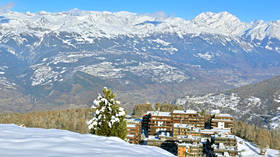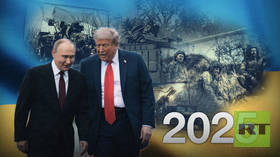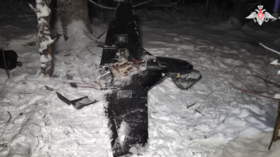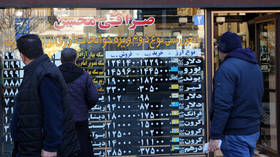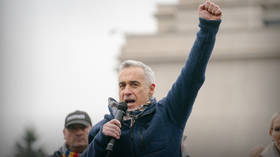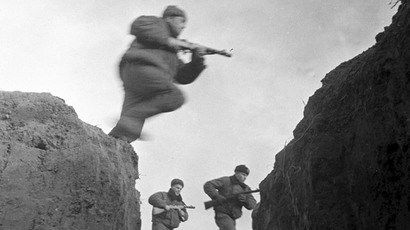Navy, jets, air show: Sevastopol marks V-Day, 70 years of liberation from Nazis (VIDEO)
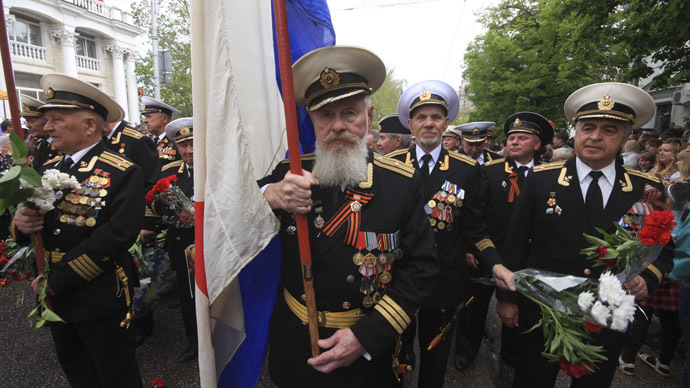
The Crimean Hero City of Sevastopol celebrated Victory Day with a breath-taking air show and a huge naval parade reviewed by President Putin. 70 years from this day, the iconic Russian naval base was liberated from Nazi troops after bloody battles.
Some 150,000 people flocked to central Sevastopol on Friday to view the massive Victory Day Parade, which this year featured land, sea and air forces of Russia coming together for a big show.
WATCH FULL VIDEO OF THE PARADE:
One of the most revered places in the history of the Russian military, Sevastopol marked the special date with Russia’s commander-in-chief Vladimir Putin, who personally inspected the Naval Parade of the Black Sea Fleet. Putin arrived in the Crimean city hours after taking part in the Moscow V-Day parade.

The celebrations come less than two months after Sevastopol rejoined Russia along with the Republic of Crimea. In the predominantly-Russian city, which for years since the collapse of the Soviet Union maintained a special and disputed status, the vast majority of residents supported accession to Russia.
More than 1,000 troops, including 11 parade battalions formed from different regiments of the Russian Navy, opened the V-Day parade in Sevastopol on Friday morning. They were accompanied by some 30 units of military hardware and 70 aircraft.
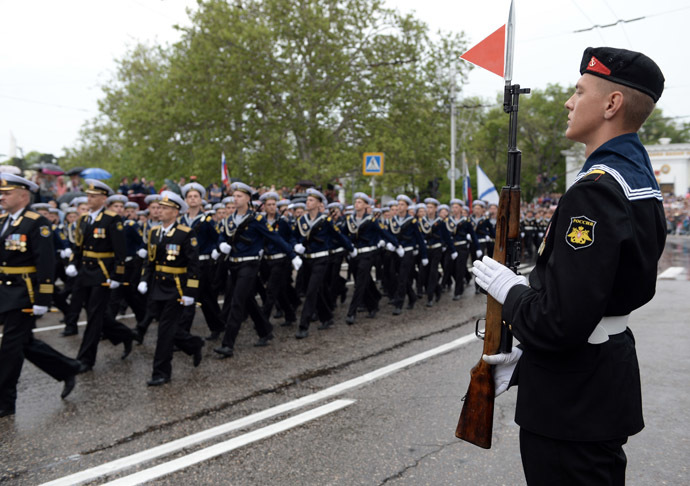
In Sevastopol Bay, 10 Russian warships lined up for a big Naval Parade, including the Black Sea Fleet’s flagship, guided missile cruiser “Moskva.” The ship, which boasts the highest combat capacity among the ships of its class in the Russian Navy, was accompanied by large ASW destroyer “Kerch,” small ASW corvette “Aleksandrovets,” guided missile hovercrafts “Samum” and “Bora,” patrol ship “Pytlivyi,” minesweeper “Vice-Admiral Zhukov,” guided missile corvette R-239, guided missile corvette “Shtil” and a new generation border patrol ship “Zhemchug.”
Legendary four-masted barque “Kruzenshtern,” veteran of several transatlantic voyages and circumnavigations, also hoisted its sails for the celebrations.

In a massive Russian Air Force flyover, dozens of helicopters, fighter jets, bombers, transport and reconnaissance planes flew over the bay in different formations. The flyover included Mi-28 (“Havoc”) and Ka-52 Alligator battle helicopters, Su-25 (“Frogfoot”) assault jets, Su-34 (“Fullback”) fighter-bombers, Tu-95 (“Bear”) strategic bombers, MiG-29 (“Fulcrum”) and SU-27 (“Flanker”) fighter jets.
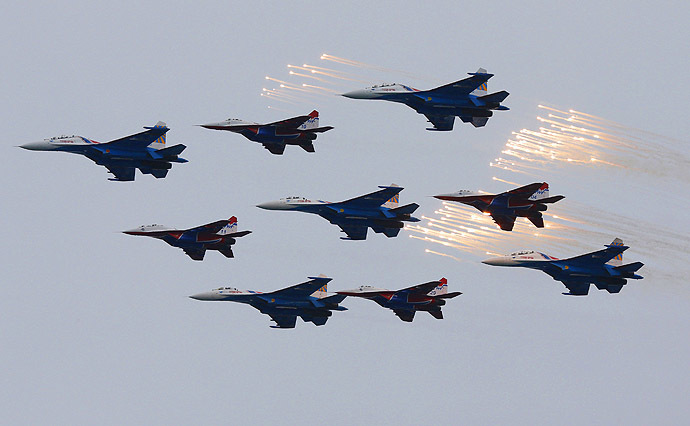
World-famous aerobatic teams Russian Knights and Strizhi (“Swifts”) arrived to Sevastopol for a spectacular joint air show flying SU-27s and MiG-29s. Breath-taking footage of the show was being broadcasted directly from a cabin of one of the fighter jets flying in close formation.
‘A special year for Sevastopol’
Addressing residents of the city and the WWII veterans who came
to celebrate the date from all over Russia, President Putin said
he is “delighted to be here in the heroic Sevastopol on this
sacred day, and to celebrate the most important holiday of our
country together with you.”
Thanking those who defeated the Nazis seven decades ago, Putin
said that the heroic deeds, the courage and valor of the veterans
that are still highly revered in Crimea made a “huge moral
contribution to Crimea’s and Sevastopol’s return to our
homeland.”
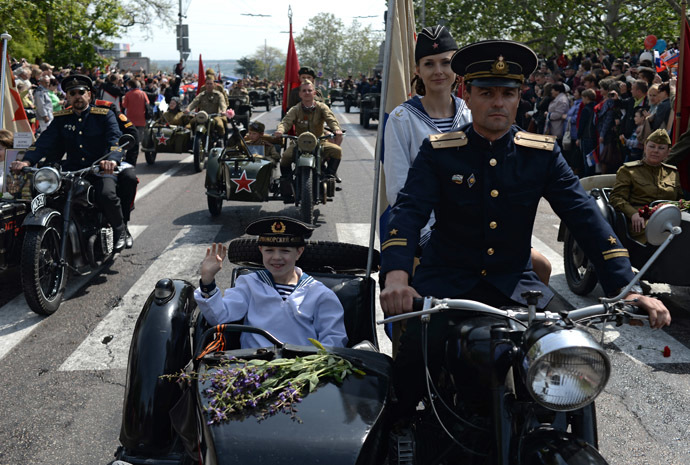
This year is very special for Sevastopol, Putin stressed,
reminding that 230 years ago Russian Empress Catherine the Great
gave it its name, 160 years ago the heroic Crimean War Siege of
Sevastopol began, and 70 years ago Sevastopol was liberated from
the Nazis by the Soviet troops.
Several generations of Crimeans remained “true to the
memory” of those who defended the city at the cost of their
lives and those who rebuilt it, and in March 2014 “confirmed
their loyalty to the historical truth, to the memory of our
forefathers,” Putin said.
Destroyed and rebuilt
In October-November 1941, the city of Sevastopol was attacked
from land, air and sea by the invading Nazi German army and their
Romanian allies. Despite unceasing bombings, in which Luftwaffe
pilots made up to 600 sorties a day, dropping some 2,500 bombs on
the city, and the destructive fire of the German heavy artillery,
the Nazis failed to quickly take Sevastopol.
For an unbelievable 250 days, the defenders of Sevastopol
repelled the attacks of the Nazis until the fortifications and
the city itself were practically leveled to the ground. Soviet
troops suffered tens of thousands of casualties, with the exact
toll still unclear. According to Russian Security Service files,
the military command evacuated from Sevastopol before its fall
reported that the troops preferred to blow themselves up than to
surrender, adding that “Sevastopol as a city is no more, it
is destroyed.”
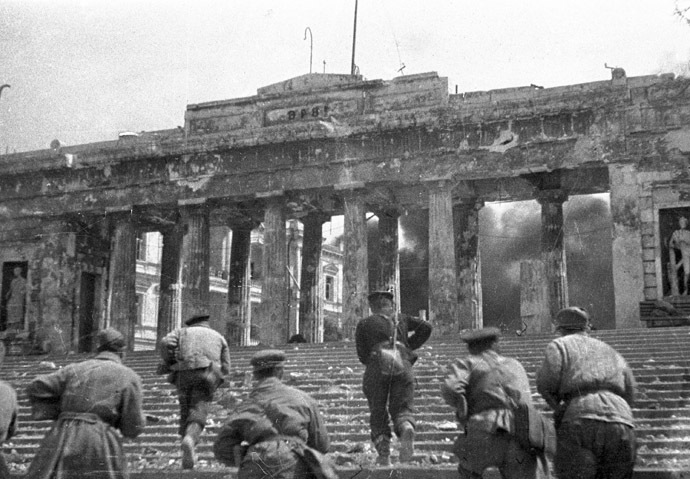
The heroic struggle made the city and its defenders a landmark in
the Great Patriotic War and a symbol of the fight against the
Nazism. The importance was well understood by the Nazis, with the
commander of the occupying Nazi German forces in the city in May
1944, Karl Allmendinger, writing that “not one name in Russia
is uttered with greater reverence than Sevastopol.”
Despite Hitler’s order “to hold every meter” of the
city, Sevastopol was retaken by the Soviet troops in April-May
1944 after bitter fighting as part of the Crimean Offensive. The
victory was a hard won one, with more than 17,700 Soviet troops
killed and over 67,000 wounded in the operation.
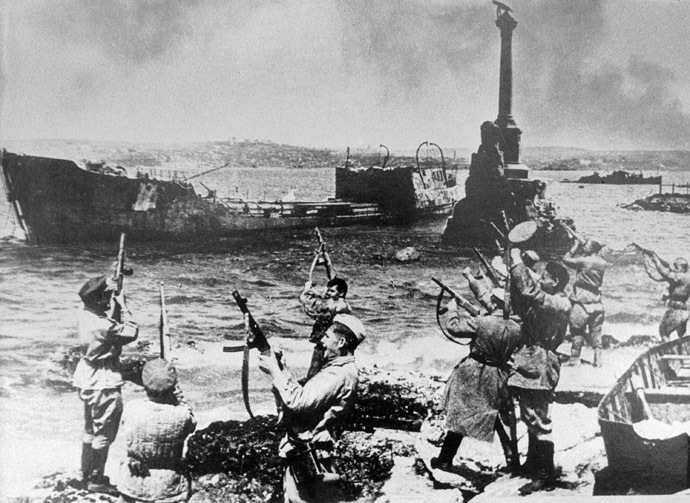
Just like after the Crimean War, Sevastopol was rebuilt from
ruins and grew even larger and stronger in the post-WWII years.
It retained its status of the strategic Russian naval base, with
its administrative part, Balaklava, remaining a “closed
city” until the collapse of the Soviet Union due to a
secrete submarine base.
The largest Crimean city, Sevastopol was made directly
subordinate to Moscow in 1948 and kept its status despite the
1954 Crimean transfer to Ukraine by Nikita Khrushchev. In the
1990s, the status of Sevastopol became the subject of endless
debates between Russia and Ukraine. Following negotiations, the
city with the surrounding territories was granted a special
“state significance” status within the Ukrainian state,
and some of the naval facilities were leased to Russia for its
Black Sea Fleet until at least 2047. However, the city’s Russian
majority and some outspoken Russian politicians still considered
Sevastopol to be a part of Russia.

In the March 16 referendum, the residents of Sevastopol voted together with the rest of the Crimean population to Russia, with a 90 percent voter turnout. The city and the surrounding region was accepted into the Russian Federation as a federal city – the other two Russian cities enjoying the special status being Moscow and St. Petersburg.




